General topics
Should you take a t-break (tolerance break)?
Published
1 year agoon
By
admin
If you smoke weed, it’s always good to take a tolerance break periodically. At some point, that T-break can come in handy for more reasons than you think.
Today, we’re going to get into those reasons. In addition, we’ll also touch on the benefits of tolerance breaks, potential side effects, and how long they last.

Why should you take a t-break (tolerance break)?
Cannabis tolerance builds up the more you smoke. The main point of a tolerance break is to reset the body’s tolerance to THC.
Why would someone need to reset their tolerance? If it gets much too high.
Unfortunately, a tolerance too high is easy to occur for everyday smokers. The best advice is to take a T-break when you feel your tolerance has peaked. Or, in some cases, you may just feel it’s time to take a break — and that’s perfectly normal, too.
If you have an especially high tolerance, it may be time to take a t break. That goes for whether you’re a medical patient or a recreational user, by the way. While recreational users are the ones most often told to take a break, medical users may benefit even further.

6 potential benefits of tolerance breaks
Need more of a reason to take a t break than it just being time? Let’s get into the benefits of a cannabis tolerance break.
1. Save money
Think about how much money you spend on weed, concentrate, and other cannabis products. If you were to take a tolerance break, you won’t be spending money on pot. Imagine how much you could save in the 2 days to 3 weeks you’ll be taking a break!
Of course, another way you can save money without quitting is by growing your own. We’ve been offering high-quality seeds to the world since 1996, so check out our seed bank to learn more. Pick a strain you like at a difficulty you’re comfortable growing, and have fun with it!

2. Better high
The ultimate goal in taking a break is resetting your tolerance. And what happens when that tolerance is reset? You get high again! Enjoy a stoned like you haven’t in too long by taking a t break when you really need one. When you come back to weed, it could be like the first time all over again. Delicious!
3. Vivid dreams
Do you have trouble dreaming at all? It might be the weed. Fortunately, taking a t break can reset your inability to dream. Users who quit smoking weed for a period of time report having vivid dreams they hadn’t experienced in years.
4. Minimize dependence
When you quit any substance, it all comes down to willpower and self-control. Minimize your dependence on weed and use it because you want to, not because you need to. While this isn’t a must for everyone, it does benefit some users.
5. Improved
Did you know taking a t break can improve lung function? Even a break of 48+ hours can provide an improvement in lung capacity and function. Plus, users experience an increase in mental clarity, too. Talk about a win-win!

6. Use reevaluation
Finally, when taking a t break, you can assess if you need to make any adjustments to your weed. Evaluate your mental and physical health to determine if you need to increase or decrease how much pot you’ve been consuming.
Potential side effects of tolerance breaks
If you’re a heavy cannabis user, you’re likely to experience some side effects from quitting. In fact, studies show that more than half of consumers report withdrawal symptoms after quitting long-term, regular use. The most common side effects are:
- Restlessness
- Decrease in or lack of appetite
- Or, conversely, cravings
- Trouble sleeping or insomnia
- Mood changes or a depressed mood
- Anxiety
- Irritability
Just remember, the symptoms are no more severe than nicotine withdrawal. Mild, albeit unpleasant, you can stick it out for however long you have in mind for your t break. You know it’ll be worth it to experience that better high for the first time again.
For medical patients, however, do heed carefully. The symptoms you were using cannabis to help with are likely to return during your period of abstinence. It may be best for you to consult with a medical health professional. Switching to another medication temporarily may be a good solution or complementary alternative to taking a t break.

How long should a cannabis t-break last?
To take an official “tolerance break,” you must stop consuming cannabis for at least 48 or more hours. However, for heavy cannabis users, even that is not enough.
The University of Vermont recommends 21 days (3 weeks) minimum for a tolerance break. In fact, the university offers a t-break guide to help support users on their journey.
It’s hard news, but it’s because THC takes about that long to leave your system. In some extreme cases, you may even want to wait longer.
If you consume cannabis chronically, you may want to extend that tolerance break to 4 weeks. Likewise, since THC bonds to fat, you’ll want to wait longer depending on your body weight.
Determine at your discretion how long you think a cannabis t break should last. Take into account your frequency of use, body weight, and current tolerance level.
The 3-week guide provides daily practices to make quitting for a period of time even easier. It also has a checklist so you can follow along and keep track of your progress. Each week has a different theme, with week one starting with physical. Then, week two leads into emotional, followed by week three for existential and spiritual.

How does marijuana tolerance work?
Cannabis tolerance is just as much behavioral as it is chemical. Behavioral tolerance is much harder to break, but you can certainly achieve it.
As our chemical tolerance of THC increases, so, too, do we rely on the behavioral aspects we come to enjoy. It’s beneficial to take a break from both to ensure you’re taking full advantage of your abstinence.
When is a tolerance break from weed needed?
The signs you need a reprieve from cannabis differ by person.
For medical patients, the main sign is when you notice you’re not getting the same result from symptom control as you used to. If you’ve been increasing your dosage lately, it may be time to cut back instead. Getting less of a result from the symptom control you were managing can lead to symptoms worsening further.
For recreational users, generally, it’s if you don’t feel the same effects that you used to from pot. Not getting high the same way? Not feeling the same relief you used to? It’s time to take a short pause from weed while you reset your body’s levels.

6 signs you may need a tolerance break
If you’ve reached a “too much” level for any of these, it’s likely time to take a breather on cannabis.
Spending too much money
If your expenses for cannabis have seen an increase, that’s a red flag. It may also be the sign you need to take that break you’ve been talking about.
Using too much product
On that same note, using up too much product can get costly. Plus, it’s a drag to just be smoking all day. If you’re using up product and not even feeling anything from it, why not take a pause?
Depending on it too much
Dependency is a hell of a drug. Be sure you’re not leaning on pot too much, just like any other medication. If you find your dependency has reached a peak, it’s okay to cut back.
Wasting too much time
As we said, it can be a drag not doing anything but smoking throughout the day. Are you wasting too much of your time on cannabis? (We didn’t think we’d ever ask that question, but you never know.)
Taking too much priority
If you find you’re shirking on other responsibilities, it may be time to cut back. Cannabis should never take priority over the other responsibilities in your life.
Too much guilt
Finally, smoking pot shouldn’t make you feel guilty.
If you’ve been wanting to quit or take a break for a while now, smoking itself may make you feel extreme guilt.
It feels like you’re running from a challenge or procrastinating, sometimes on yet another thing in your life. If you’ve wanted to rearrange your priorities and quit smoking, you likely know the feeling all too well.
There’s no shame in taking that much-needed break. Walking away, even for a bit, can lead to many positive changes in your life.
Likewise, you can still support the legalization and normalization of cannabis even if you’re not consuming it. It’s essential to do whatever is best for your specific situation.

4 tips for a successful marijuana tolerance breakdown
Alright, now we get to the fun part. As we finish up our guide, we want to make your break even easier. Here are all our tips and tricks on how to successfully pull off this cannabis tolerance break.
All about timing
Don’t talk about it anymore — just do it. Pick a date and just start. The more procrastinating you do, the more likely you are to just not do it. Pick a date sooner than later. And don’t increase your smoking routine before your break, either. You can do this!
Hide the stash
Keep everything out of your eyesight while you’re on this abstinence adventure. The closer you are to it physically, the more likely you are to consume it. If you can, leave your stash and paraphernalia with a friend while you countdown your break. Or, just get rid of it!

Build a support system
Identify who might help you while you’re taking a t-break and surround yourself with that vital support system. There may be some people in your life that make taking a break more difficult. You’ll need to abstain from seeing those people until your pause is over.
Use something else
When in doubt, try CBD. Make sure you use an isolate or a broad-spectrum CBD to ensure you’re not using any THC. It’s not recommended, but it’s better than using cannabis and cutting your pause early! Remember, you can do this. You have the power and self-control to pause for how long you want to abstain.
FAQs
How often should you take a tolerance break?
How often you should take a tolerance break depends entirely on your preferences as a consumer.
Some users use a template of smoking a certain amount of days and abstaining for a day or two before returning to cannabis.
Others may skip smoking on a specific day of the week, or not consume before a certain time of day daily.
Find your comfort level and do what you feel fits your dynamic and routine the best.
Is 10 days a good tolerance break?
10 days is a long tolerance break for some users, but not enough for others. It depends on your frequency of use, tolerance level, and much more.
How long does it take to break weed tolerance?
The University of Vermont reports it takes 21 days, on average, to break weed tolerance.
You may like
-


This State’s Cannabis Revenue Keeps Pouring In
-


Major Bloom: Cultivating community, creativity, and cannabis in Worcester
-


How a Colorado operator stumbled onto ‘blueprint for laundering marijuana’
-


Northern Ireland: Man charged after £425,000 worth of cannabis seized
-


Getting THC Edibles in Your Edible Arrangement?
-


Is Cannabis Legal in California Right Now?
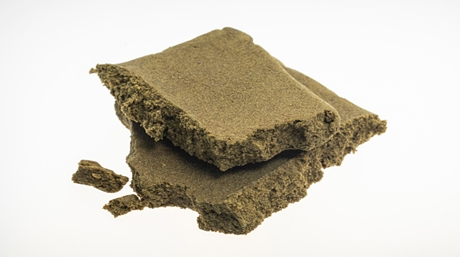
Many people often wonder how they can make cannabis hashish. Popularly shortened to hash, it is an Arabic name that means grass. Over countless years, this concentrate from the cannabis plant has been utilized by many cultures for its beneficial properties.
Today, the growing curiosity about how to make cannabis hash prompts us to come up with an ultimate guide on how the process can be done in a straightforward manner.
Producing hash requires separating cannabis bud trichomes from the other plant parts. In female cannabis plants, there are frosty white hairy-like structures. In this case, that’s what we refer to as trichomes. These parts are highly abundant in THC, which is why they are the most desired part of the plant. Remember that to come up with viable hashish, you must extract substantial amounts of THC.
Kief vs. hashish
Hashish doesn’t come merely from the separation of trichomes. The important factor at this point is kief. Kief is the raw material that aids in the production of hashish. When heat and pressure are applied to kief, hashish comes into existence.
Making kief into hash
From kief, it’s easy to come up with hash. There are two ways in which one can complete the process:
• Pollen pressing
• The heat and pressure method.
The pollen processing method
Pollen Processing involves placing kief in a press. Next, you apply firm pressure to make it moldable. By applying direct pressure to the kief, you will create a basic hash (really a kief puck). This method makes it easier to come up with a puck of hash.
However, this method has disadvantages. The flavors do not get a chance to develop, as there is no heat used in the process. The heat assists in developing and maintaining the flavors of the hash in its finished form. Heating and applying pressure to kief gives you a higher-quality hash.
The heat and pressure method
You can use the puck that you created above, or you can use cellophane to wrap kief and use a rolling pin to apply pressure and create a puck. Just keep gently applying pressure until the kief is at the density and shape that you want. You can continue to do this as long as you want. You can also let it sit for a day or two so that all of the flavors meld together. When you are ready, remove the cellophane.
Once you have created a kief puck using a pollen press, to do the heat and pressure method, you will need to gently heat the kief. You will want to wrap the puck in a wet paper towel. You will then wrap the kief in a wrap that can withstand being in a 93 – 137°C (200 – 280°F) oven. A good cooking parchment paper will be perfect for this application.
Place the parchment paper and its contents in an oven set somewhere between 93 – 137°C (200 – 280°F). Make sure that the contents do not spill out. Having a baking sheet handy would be very helpful here. Place the package in your oven for 5-10 minutes. Unwrap the package. Rewet your paper towel, re-press your puck using the method above, and then rewrap it in parchment paper. Place this in the oven again for 5-10 minutes. Repeat the process. You want to do this whole process at least three times. Let it cool overnight or by placing the product in your fridge or freezer.
The pressure and heat method will produce a superior hash.
Methods used in the production of hashish
There are other different methods used in coming up with hash. However, these ways give different potency levels.
It is also worth mentioning that different cannabis plants have different cannabinoid levels. That said, they can produce varied qualities of hash depending on the marijuana strain used. There are quite a few methods used to make cannabis hash. Nonetheless, we are going to give the three most used and cheap to try at home.
1. Finger production method
This could be described as the easiest method for producing hash. As one harvests ganja from the cannabis plants, there may be instances where it sticks to the palms and the fingers.
The method involves placing a can or jar and rubbing your hands and fingers together over the can so that it collects the parts of the buds that stick to your hands. This can then be used to produce hash by rubbing your hands together vigorously. The heat and pressure produced during rubbing aid in combining the mixture into hash. However, this type of hash is described as having low quality. There may also be contamination coming from sweat and dirt on your hands.
The obtained hash may have off-flavors and unpredictable effects, which is a negative.
2. Silkscreen
This method involves sieving cannabis trichomes through a silk screen. Depending on your preference, you can opt to make your silkscreen or purchase one. Either way, note that the cannabis plant parts must be trimmed into very tiny sizes through this screen.
That said, you also need to ensure that you see the trichomes and collect them painstakingly. The finer the silkscreens that you use, the higher the probability of coming up with finely produced hashish.
One can opt to use the remains to sieve them further. However, the kief obtained from the get-go usually has mostly potent hashish. Depending on the amount of hash needed, a single silkscreen is under most circumstances sufficient to come up with a substantial amount of hash.
3. Blender method
The blender method relies heavily on probability. The colder the trichomes, the easier it gets to separate them from the rest of the cannabis plant parts. Ice is a crucial ingredient in this method. Using this method involves mixing the cannabis plant matter, water, and ice into a blender.
Switching on the blender aids in separating the iced plant matter to get the trichomes. That becomes evident after switching off the blender. The trichomes sink, making it easy to obtain them promptly.
A sieve can then get used. The trichomes penetrate easily, which is why they pass through the sieve with water while the rest of the plant parts remain in the sieve.
Letting the trichomes and water mixture cool for 30 minutes afterward helps the trichomes form a layer at the bottom. However, one ought to be careful because slight disturbance to the trichomes can lead to unnecessary impurities. The trichomes layer can then get placed in a freezer for ten minutes.
In summary
Making hash is a sure way to make trichomes usable in a unique way. Now that you have the info necessary to come up with these concentrates, the ball is in your court.
The marijuana strains you use to extract the trichomes play an essential role in the overall effects obtained after using hashish. The better the strain you use, the better your hash will be.
Follow the method of your choice and enjoy your hash to the fullest!
General topics
How To Make Hash Or Hashish, Expert Tips!
Published
4 months agoon
December 14, 2024By
admin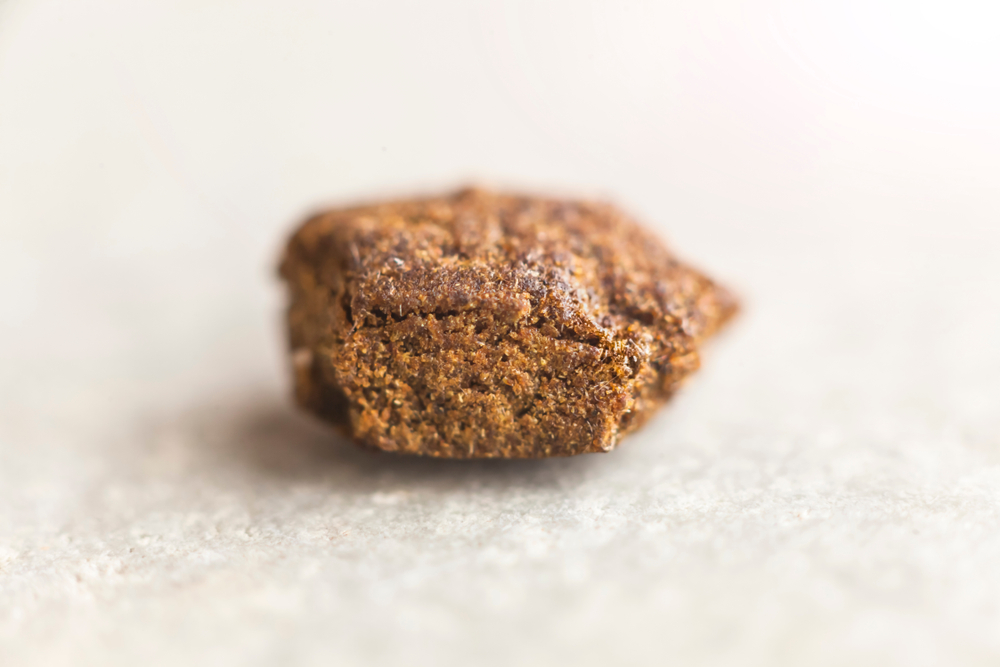
Hashish is a cannabis concentrate. It is wonderful stuff that you can crumble and put in a joint or smoke in a bowl. You can buy it from a dealer, but did you know that you can also make it relatively easily yourself? You don’t need that much at all. There is even a method that requires no tools at all, just your hands! Read on and make your own hash! In this article we’ll discuss two methods, namely making hash using a sieve and making hash using a blender.
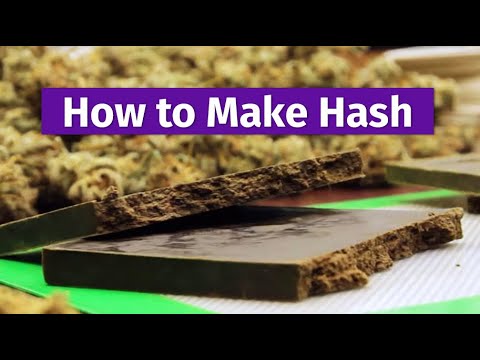
Make hashish with a sieve
There are different ways to make hashish. For example, you can roll your plant material under your hands. Because you press hard and roll, the trichomes stick to your hands. A sticky layer will remain on your hands, and if you carefully scrape it off, you will have hash!
Rolling is a simple method because you don’t need anything for it. Well, of course, you need plant material. You can use stems, leaves, and flower tops for it. In fact, everything that remains after harvesting still has trichomes. There are trichomes on almost all parts of a weed plant. Sometimes there aren’t that many, but by rolling everything under your hands, enough sticks. Suppose you don’t like this method, for example, because you don’t want to get your hands dirty, there are many more ways to make hash. So read on, and discover other ways that might be of interest to you. Keep in mind that every way to make hash produces a different kind of hash. A certain method influences the structure, for example, the hash may end up being a bit dry or very sticky. And how strong the hashish is can differ. But that is just the fun. With every method you use, the end product is about the same, since it falls into the hashish category. Yet there are differences in the final product that make it interesting again. Certainly, if you make it yourself, you can vary nicely. That way you learn what you like best. Anyway, we want to teach you a method here that is very simple. The only thing you need for it is a sieve. This method is also called ‘flat screening’. Use a strainer that you can easily hold in your hand, the smaller the holes, the better and purer your final product will be. We assume that you are looking for quality, not quantity!
It is best to first put your weed in the freezer for a while. That will help to get the trichomes off your weed plant better. When you have done that, remove the plant material from the freezer. Make sure you have a clean work table or surface. Put the plant material on the sieve and rub it very carefully back and forth. By rubbing the plant material remains on the sieve and the trichomes fall through the fine holes of the sieve. The trichomes fall on the surface under the sieve. Continue to sift for a while, until no more trichomes fall and the plant material is ‘finished’.
Making hashish in a blender
Of all the ways to make hashish, this is perhaps the coolest. And it is not only very fun to do, but it is also very simple. You probably have all the materials for this method at home. You need a blender and a strainer (sieve) for it. Are you ready to make your own fresh, wonderfully smelling, homemade hashish? Here we go!
Put all the cutting residues that you have left after pruning or harvesting in a blender. Now fill the blender with water so that all the plant material is just covered with water. Wait, don’t start mixing right away. We appreciate your enthusiasm! But ice must first be added. Fill the blender completely with ice. Now it’s time to mix. First do it a bit quietly, so that the ice can crush, and then turn the blender knob all the way to high-speed mode, and mix for a minute at the highest setting. You now get a kind of green soup, a bit of a slimy mixture. Now take the sieve and keep it above a jug or a pot. Pour the green mixture through the sieve into the jug and let it rest for about an hour. You now see something very nice happening: the trichomes form on the bottom. If you want to see this, you must take a glass can. Then you can see it all happen. Now comes a precise job, which you have to handle carefully. Drain part of the water, but watch out, make sure you don’t wash away the trichomes because you want them! Now fill the pot again with very cold water and let it rest for 10 minutes. Drain part of the water again and be careful not to wash away the trichomes. You have to be patient now, and not make it easy for yourself. Just wait and restrain yourself for a moment! For good quality hashish, you have to repeat this process about 6 times.
We will now make real hashish
Did you do all this? Beautiful! Then we will now make real hashish. Start by carefully draining as much water as possible from the jug (or pot, depending on what you use). So don’t rinse the trichomes away, otherwise, you can start over again, and you will have better things to do! Now grab a filter. A coffee filter works best. Carefully pour the solution left in the jug through the coffee filter. Now all the water is washed away and a sticky mass remains in the filter. Tadaaa, there is your homemade hash! Congratulations! First, gently squeeze the filter to remove even more water, pressing the hashish slightly. You can now let it dry and then smoke it in a bowl or joint, just what you like best. It is not necessary to first heat the hash or compress it even further. Enjoy!
Cannabis FAQ
Expert Lighting Tips For Successful Indoor Growing Weed
Published
4 months agoon
November 22, 2024By
admin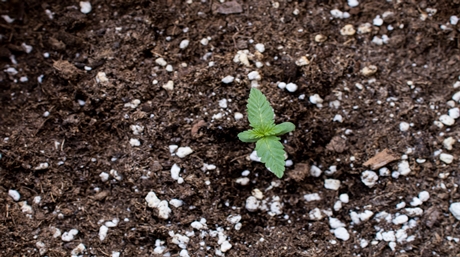
Cultivating Your Green Haven Year-Round
As the cold weather approaches and outdoor growers retreat indoors to continue their cultivation throughout the winter, the importance of choosing the right lighting for indoor growing becomes paramount. With a myriad of illumination options available, it’s easy to feel overwhelmed. But fear not, for we are here to guide you through the process, helping you create a thriving indoor garden that will yield bountiful results throughout the year.
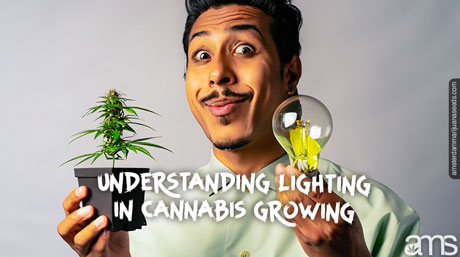
Illuminate the Path to Successful Indoor Growing Weed
When it comes to indoor cultivation, lighting is undeniably one of the most crucial factors to consider. Not only does lighting play a vital role in manipulating the natural light cycles of marijuana plants, but it also serves as, the catalyst for photosynthesis—the process by which plants create their own, nourishment. Within the leaves of cannabis plants, chlorophyll acts as a light-absorbing pigment, harnessing light energy to convert water and carbon dioxide into food sugar.
The process of photosynthesis is directly influenced by the color, duration, and intensity of light received by the plant. By strategically altering these factors, you have the power to impact your plant’s food production. Cool blue and warm orange are examples of illumination colors that enhance a plant’s ability to generate sustenance. During the summer months, cool light is most beneficial, promoting dense and well-shaped growth. In contrast, warm-colored light during the fall harvest months induces the development of vibrant flowers. In essence, cool colors stimulate growth, while warm colors act as catalysts for flowering.
Embracing Darkness: The Role of Light Cycles
Beyond light color, the duration of light exposure your cannabis plant receives is of utmost importance. By adhering to specific light cycles, you can ensure optimal growth and flowering. During the growth phase, it is recommended to provide your young plants with 18 hours of light and 6 hours of uninterrupted darkness. This extended period of light exposure fuels vigorous vegetative growth. However, once the plant is ready to flower, adjusting the light cycle to 12 hours of light and 12 hours of darkness triggers the flowering process.
The flexibility of indoor cultivation allows you to customize the light cycle based on your preferences and the needs of your plants. This is especially beneficial during the winter months when maintaining a consistent temperature is challenging. By utilizing the ability to leave the lights on during the night and off during the day, you can create a more stable environment, minimizing temperature fluctuations and providing a nurturing space for your plants.
Choosing the Right Lamps: Illuminating Your Indoor Oasis
Selecting the appropriate lamps for your indoor grow room requires careful consideration of various factors. Firstly, assess the amount of light intensity required for your plants’ growth stage. Secondly, consider the size of your grow room, as this will determine the number and placement of lamps needed. It is essential to evaluate the electrical capabilities of the room to ensure that the chosen lamps can be adequately powered. Additionally, contemplate the preferred light color that aligns with the specific growth stage and desired outcomes. Lastly, establish a budget and compare the prices of different illumination options, keeping in mind that lighting systems are long-term investments that can incur higher costs due to their power consumption.
Fluorescent lamps with a broad color spectrum are particularly beneficial for seedlings that have not yet developed large leaves. These lamps provide ample light and support the initial stages of growth.
Indoor growers seeking maximum intensity per watt would benefit from high-pressure sodium lamps (HPS). Known for their efficiency and cost-effectiveness, HPS lamps emit a warm orange glow, which triggers plant hormones that facilitate bud development and flowering. While HPS lamps excel at providing warm light, they are less proficient in emitting cool blue light. Consequently, they are best suited for the flowering stage of growth. If you were to use an HPS bulb for seedlings, it is advisable to keep the lamps at a lower height (approximately 80 cm/31.50 inches) to encourage rapid horizontal growth. Early pruning can also help control plant height and prevent excessive stretching.
On the other hand, metal halide lamps (MH) are highly efficient and serve as an excellent primary light source for indoor growers. Emitting one of the brightest cool lights available, MH lamps are ideal for promoting foliage growth and cultivating robust plants. With an average lifespan of 10,000 hours, MH lamps retain their glow for an extended period. However, it is important to note that over time, the energy they emit within the blue range diminishes. Therefore, regular assessment and potential replacement of MH lamps are necessary to maintain optimal illumination conditions.
Expert Tips for Successful Indoor Growing Weed
To ensure the success of your indoor cultivation journey, consider the following tips:
- Maintain Adequate Distance: Pay close attention to the proximity of your plants to the light source. If the lamps are too close, they may cause light burn and damage your precious foliage. Strive to maintain a safe distance between the lamps and plants to avoid such undesirable outcomes.
- Achieve Balance: Provide all your plants with a consistent and equal amount of light. Avoid overcrowding, as taller plants may overshadow their smaller counterparts, depriving them of much-needed light. To overcome this challenge, consider using bins or adjustable platforms to elevate smaller plants closer to the light source, ensuring equitable light distribution.
- Cultivate a Year-Round Bliss: Embrace the advantages of indoor cultivation, relishing a year-round supply of your favorite buds. Although setting up your indoor oasis may seem initially daunting, the rewards will be reaped one bud at a time. With careful attention to illumination, you can create an optimal environment for your plants to thrive regardless of the season.
In conclusion, selecting the ideal illumination system for indoor growing is a decision that warrants thoughtful consideration. By understanding the profound impact of light color, cycle duration, and intensity on your plants, you can make informed choices that maximize yield potential. Whether you opt for fluorescent lamps, high-pressure sodium lamps (HPS), or metal halide lamps (MH), remember to strike a balance and provide optimal conditions for your plants to thrive. Embrace the joys of indoor cultivation and revel in the delights of a bountiful harvest, regardless of the season.

This State’s Cannabis Revenue Keeps Pouring In

Major Bloom: Cultivating community, creativity, and cannabis in Worcester

How a Colorado operator stumbled onto ‘blueprint for laundering marijuana’

Northern Ireland: Man charged after £425,000 worth of cannabis seized

Getting THC Edibles in Your Edible Arrangement?

Is Cannabis Legal in California Right Now?

Germany: Trial against operator of Trier cannabis vending machine discontinued

The best energizing THC gummies of 2025 by Leafly

Mixed Messages From The Feds About Cannabis

Humboldt County extends deadline to pay marijuana cultivation taxes

Distressed Cannabis Business Takeaways – Canna Law Blog™

United States: Alex Malyshev And Melinda Fellner Discuss The Intersection Of Tax And Cannabis In New Video Series – Part VI: Licensing (Video)

What you Need to Know

Drug Testing for Marijuana – The Joint Blog

NCIA Write About Their Equity Scholarship Program

It has been a wild news week – here’s how CBD and weed can help you relax

Cannabis, alcohol firm SNDL loses CA$372.4 million in 2022

A new April 20 cannabis contest includes a $40,000 purse

Your Go-To Source for Cannabis Logos and Designs

UArizona launches online cannabis compliance online course
Trending
-

 Cannabis News2 years ago
Cannabis News2 years agoDistressed Cannabis Business Takeaways – Canna Law Blog™
-

 One-Hit Wonders2 years ago
One-Hit Wonders2 years agoUnited States: Alex Malyshev And Melinda Fellner Discuss The Intersection Of Tax And Cannabis In New Video Series – Part VI: Licensing (Video)
-

 Cannabis 1012 years ago
Cannabis 1012 years agoWhat you Need to Know
-

 drug testing1 year ago
drug testing1 year agoDrug Testing for Marijuana – The Joint Blog
-

 Education2 years ago
Education2 years agoNCIA Write About Their Equity Scholarship Program
-

 Cannabis2 years ago
Cannabis2 years agoIt has been a wild news week – here’s how CBD and weed can help you relax
-

 Marijuana Business Daily2 years ago
Marijuana Business Daily2 years agoCannabis, alcohol firm SNDL loses CA$372.4 million in 2022
-

 California2 years ago
California2 years agoA new April 20 cannabis contest includes a $40,000 purse



